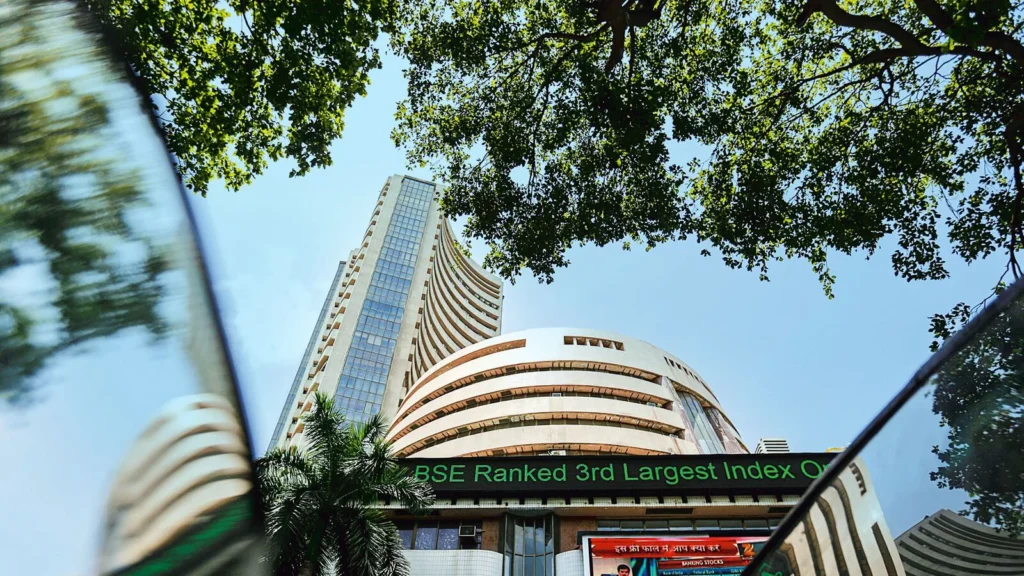The Indian stock market has experienced significant volatility in the past two months, marked by notable declines in major indices, substantial foreign portfolio investor (FPI) outflows, and sector-specific fluctuations. This article delves into the key events and trends that have shaped the market from December 2024 to February 2025.
Table of Contents
Indian Stock Market Indices: A Downward Trajectory
Since mid-December 2024, the BSE Sensex has witnessed a decline of approximately 7.5%, trading around 76,000 points—nearly 10,000 points below its peak in September 2024. Small-cap and mid-cap stocks have been particularly affected, with declines of 21% and 19%, respectively. This downturn has been primarily attributed to significant withdrawals by foreign portfolio investors, who have redirected their investments to markets like China following notable technological advancements there.
Foreign Portfolio Investor Movements
The Indian Stock market’s downturn has been closely linked to the actions of FPIs. In January 2025, FPIs withdrew a massive ₹78,027 crore, followed by an additional ₹7,342 crore in February. This exodus has coincided with a sharp decline in Indian stock markets, especially in broader indices, amid global economic uncertainties and high domestic valuations.
Historically, FPI exits have led to considerable market downturns. In 2024, FPIs were net sellers in eight months, with the highest selling in October amounting to ₹1.14 lakh crore. Overall, 2024 saw FPIs selling a net ₹2.96 lakh crore—a record for a single year.

Sectoral Performance: Divergent Trends
The market’s decline has not been uniform across all sectors. While indices like the Nifty 50 and Sensex managed to deliver around 10% returns in 2024, showcasing the steady performance of blue-chip stocks, the Nifty Smallcap 100 and Nifty Midcap 100 indices significantly outperformed their large-cap counterparts, with returns of 23.86% and 23.66%, respectively.
In December 2024, the Nifty 50 index saw a slight decline of 0.69% by December 30, with key sectors like IT and Auto weighing it down. The IT sector faced pressure as investors lowered expectations for U.S. interest rate cuts, impacting companies with significant exposure to the U.S. market.
In February 2025, sectoral indices on the NSE ended on a mixed note. Banking, financial services, and metal indices ended higher by up to 0.84%, while the Nifty Realty index was the top laggard, settling down by 2.74%. Other sectors such as IT, Auto, FMCG, Pharma, and Healthcare also experienced declines of up to 1.14%.
Economic Indicators and Policy Responses
The Reserve Bank of India (RBI) has maintained a stable monetary policy stance, which helped stabilize market sentiment amidst global uncertainties. However, liquidity injections via Cash Reserve Ratio (CRR) cuts and potential rate reductions in early 2025 could bolster market sentiment further. Strong-performing sectors like consumer goods and IT continue to provide attractive investment opportunities.
Additionally, trade negotiations during Prime Minister Narendra Modi’s visit to Washington in February 2025 resulted in small concessions, such as cuts to tariffs on bourbon whiskey and Harley-Davidson motorcycles. However, uncertainties surrounding U.S. trade and tariffs on India remained unresolved, posing risks for the Indian economy.
News related to Automation and AI
Investor Sentiment and Future Outlook
The recent Indian Stock volatility has led to a cautious approach among investors. The sustained FPI outflows and sector-specific challenges have contributed to a complex investment landscape. However, India’s long-term growth thesis remains intact, supported by compelling structural factors and a robust growth profile.
Looking ahead, investors must brace for a roller-coaster ride in the stock market in 2025, as the fluctuations seen in the latter part of 2024 could spill over into the new year. Still, Indian equities could notch up gains, with the Nifty expected to touch 25,000-27,500 by December, according to most of the 30 stock market participants surveyed in a poll.

Conclusion:
In conclusion, the Indian stock market’s performance over the past two months reflects a confluence of global and domestic factors influencing investor behavior and market dynamics. While challenges persist, strategic reforms, robust corporate performances, and a stable economic outlook provide a foundation for potential recovery and growth in the coming months.


[…] Link Internal […]
[…] News Related to Indian Stock Market […]